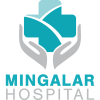Electroencephalogram
EEG (Electroencephalography) is a non-invasive diagnostic test that measures and records the electrical activity of the brain through electrodes placed on the scalp. Here are some benefits of using an EEG:
- Non-invasive: EEG is a non-invasive diagnostic test that does not require any incisions or injections. It is a painless and safe procedure that does not cause any harm to the patient.
- Diagnose neurological conditions: EEG is commonly used to diagnose neurological conditions, such as epilepsy, brain tumors, and sleep disorders, by measuring the electrical activity of the brain.
- Identify abnormal brain activity: EEG can detect abnormal brain activity that may not be visible on other imaging techniques, such as CT scans or MRI.
- Assess brain function: EEG can be used to assess brain function in patients with traumatic brain injuries, strokes, or other neurological conditions. It can also be used to monitor brain activity during surgeries or other medical procedures.
- Personalized treatment: EEG can help doctors develop personalized treatment plans for patients with neurological conditions. By identifying the specific location and nature of the abnormal brain activity, doctors can determine the most appropriate treatment options for each patient.
Overall, the benefits of EEG make it a valuable tool for medical professionals in diagnosing and treating various neurological conditions. EEG is non-invasive, can diagnose neurological conditions, identify abnormal brain activity, assess brain function, and develop personalized treatment plans for patients.

